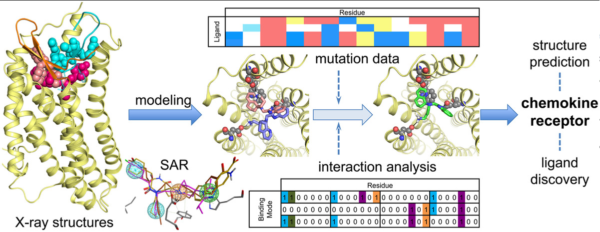In the field of drug discovery, the development of effective ligands is crucial for targeting specific biomolecules and modulating their activity. Among the diverse array of ligands, triazoles have emerged as a promising class of compounds with great potential. Triazoles, characterized by a five-membered ring containing three nitrogen atoms, exhibit a unique combination of stability, versatility, and bioactivity. In this text, we will explore the various applications and advantages of triazoles as ligands in drug discovery.
Structural Diversity and Synthetic Accessibility:
Triazoles offer a range of structural diversity due to the presence of multiple positions available for modifications. This versatility enables scientists to fine-tune the physicochemical properties of triazole-based ligands, optimizing their interactions with target biomolecules. Furthermore, the synthetic accessibility of triazoles is well-established, allowing for efficient and scalable synthesis using a variety of synthetic routes. This accessibility facilitates the systematic exploration and development of triazole-based ligands for various applications.
Targeting Biomolecules:
Triazoles have the ability to interact with a wide range of biomolecules, including proteins, nucleic acids, and enzymes. The unique electronic and steric properties of triazoles enable them to form hydrogen bonds, coordinate with metal ions, or engage in π-π interactions, depending on the specific conformational requirements of the target molecule. The diverse binding modes of triazoles enhance their versatility as ligands, allowing for selective and specific targeting of biomolecules involved in various disease processes.
Medicinal Applications:
Triazole-based ligands have been investigated for their potential use in multiple therapeutic areas. Some notable applications include:
Cancer therapy: Triazole-based ligands have been explored as anticancer agents, often targeting specific enzymes or receptors involved in cancer cell growth and proliferation. These ligands can inhibit enzyme activity, disrupt protein-protein interactions, or modulate signaling pathways, making them valuable tools for developing targeted cancer therapies.
Infectious diseases: Triazoles have shown promise as antifungal and antibacterial agents. For example, triazole derivatives exhibit potent activity against fungal pathogens by inhibiting the biosynthesis of ergosterol, an essential component of fungal cell membranes. Triazoles have also been investigated as potential antibiotics, targeting specific bacterial enzymes or pathways involved in cell wall synthesis or DNA replication.
Central nervous system disorders: Ligands incorporating triazole scaffolds have been explored for their potential to modulate neurotransmitter receptors and transporters involved in neurological disorders such as Alzheimer’s disease, depression, and schizophrenia. The unique pharmacological profile of triazole-based ligands allows for the development of molecules with favorable drug-like properties and higher receptor selectivity.




